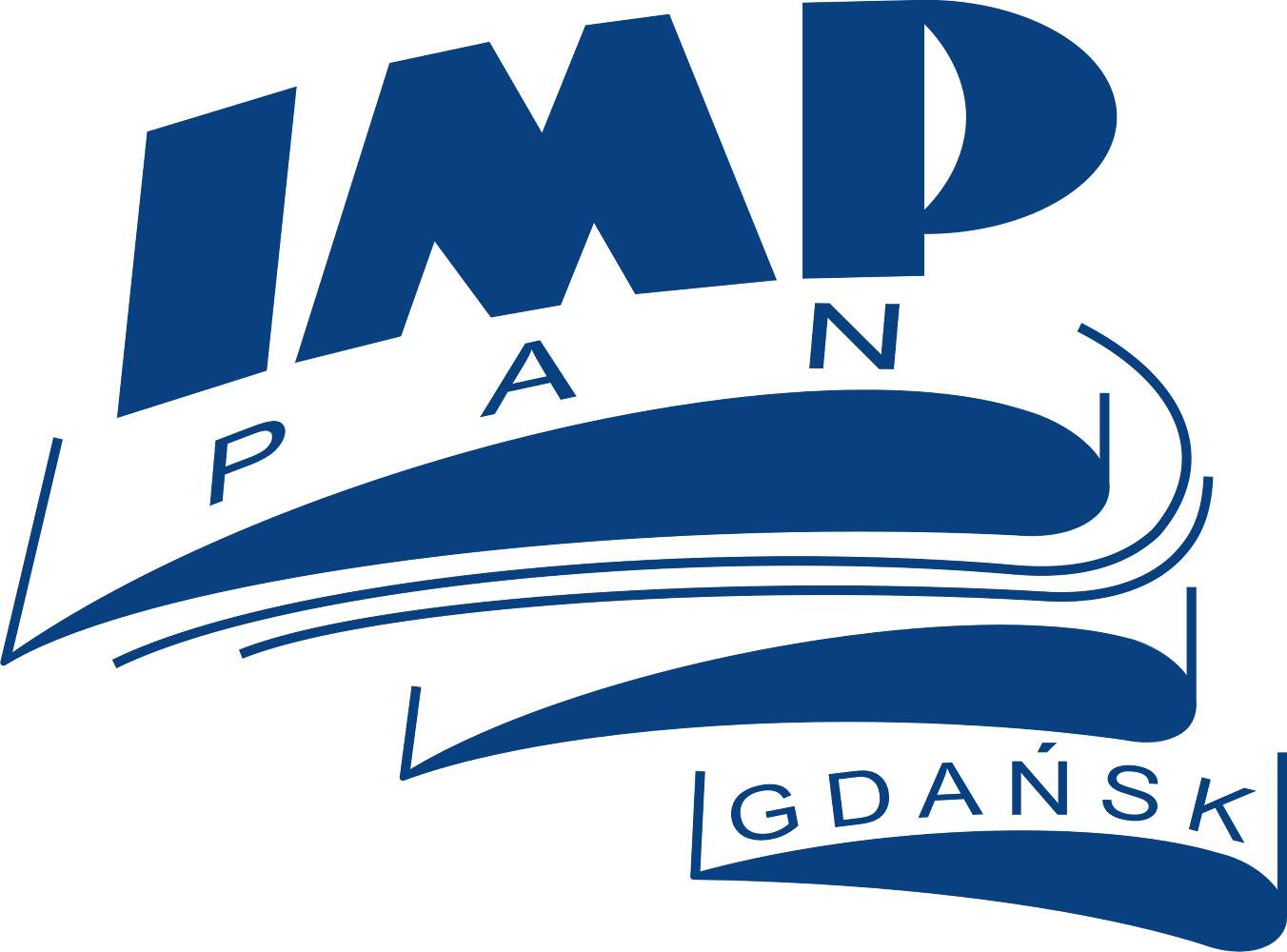 Objectives: Stator cascades of modern turbofan engines operates at very high aerodynamic loading. Due to that, there is a local supersonic zone on suction side of compressor vane and the mitigation of unsteady effects of shock wave boundary layer interaction become crucial for aerodynamic performance improvement. The shock wave boundary layer will be investigated numerically and experimentally. The test section will be designed and manufactured to investigate compressor stator representative configuration. Fundamental goal of the project is to analyse details of the flow structure which improve understanding of the interaction in such configurations and allow to design highly loaded and highly turning stator cascades
Objectives: Stator cascades of modern turbofan engines operates at very high aerodynamic loading. Due to that, there is a local supersonic zone on suction side of compressor vane and the mitigation of unsteady effects of shock wave boundary layer interaction become crucial for aerodynamic performance improvement. The shock wave boundary layer will be investigated numerically and experimentally. The test section will be designed and manufactured to investigate compressor stator representative configuration. Fundamental goal of the project is to analyse details of the flow structure which improve understanding of the interaction in such configurations and allow to design highly loaded and highly turning stator cascades
Expected Results: It is expected to design a new test section for experimental investigations and to obtain new results and an innovative database for the flow structure of the considered shock wave boundary layer interaction. Numerical simulations will be also carried out and compared with experimental data. Based on the analysis of the experimental and CFD results, selected flow control methods will be proposed and applied in order to improve aerodynamic performance
Planned secondment(s): AMU, TU Delft, ONERA
Supervisor: Prof. Pawel Flaszynski

Arun Joseph
MSc – Aerospace Engineering (Propulsion & Design) at Fachhochschule Aachen (FH Aachen), Aachen Germany 2020
Bachelor’s in engineering (BE) – Aerospace Engineering (Aircraft & Helicopter Manufacturing) at National Aerospace University Kharkiv Aviation Institute (KHAI), Kharkiv Ukraine 2017
Arun Joseph is an Aerospace enthusiast, who is passionate about Aircraft and Engines. He has experience in both Numerical and Experimental fluid mechanics. His main research interest comprises of CFD, Turbulence-modelling, Shockwave Boundary layer Interaction, design and optimisation of turbomachinery blades. Arun did his Internship and Master Thesis at Rolls Royce Germany. He assisted the rotative design team as a design engineer intern and contributed himself in development of future engine project. His Master thesis at Rolls Royce was in Multidisciplinary design optimisation of Engine Fan Blades where his main objective parameter was Flutter prediction at the transonic regime. Along with his master thesis, he worked for RR as a Structural engineer with the contract of Ferchau GmbH (Test-Rigs and Powered Gear Box Team). He even kept his hands into multiple domains like Aircraft maintenance (Air INDIA), Defense researcher (DRDO) and the R&D team of Munters GmbH. His passion for aviation propels him in creating a better future where humanity could fly safer and cleaner.
Contact: arun.joseph@imp.gda.pl
 Objectives: In case of a civil turbofan engine operating at particularly high altitudes the Reynolds number can drop by a factor of 4, if compared to the sea level values. The laminar boundary layer on the transonic compressor/fan rotor blades interacts with shock waves and, as a result, a strong boundary layer separation forms. This can seriously affect the aero-engine performance and operation. An improvement can be achieved by an application of flow control methods (e.g. roughness, vortex generators). Numerical and experimental investigations of transonic effects on suction side of rotor profile will be carried. Measurements will be done at the single passage test section, which was designed and already used during EU FP7 TFAST project.
Objectives: In case of a civil turbofan engine operating at particularly high altitudes the Reynolds number can drop by a factor of 4, if compared to the sea level values. The laminar boundary layer on the transonic compressor/fan rotor blades interacts with shock waves and, as a result, a strong boundary layer separation forms. This can seriously affect the aero-engine performance and operation. An improvement can be achieved by an application of flow control methods (e.g. roughness, vortex generators). Numerical and experimental investigations of transonic effects on suction side of rotor profile will be carried. Measurements will be done at the single passage test section, which was designed and already used during EU FP7 TFAST project.
Expected Results: Analysis of the flow control effect on the boundary layer evolution upstream of the shock wave in compressor case and its influence on shock wave boundary layer interaction will be deeply investigated. Important results will concern the influence of the boundary layer upstream of the shock and the interaction with boundary layer on unsteady effects, separation size, wake and corner flow separation. Assessment of applicability of used numerical methods for SBLI and corner flow separation.
Planned secondment(s): NUMECA, Rolls-Royce Deutschland, DLR
Supervisor:
Prof. Paweł Flaszyński
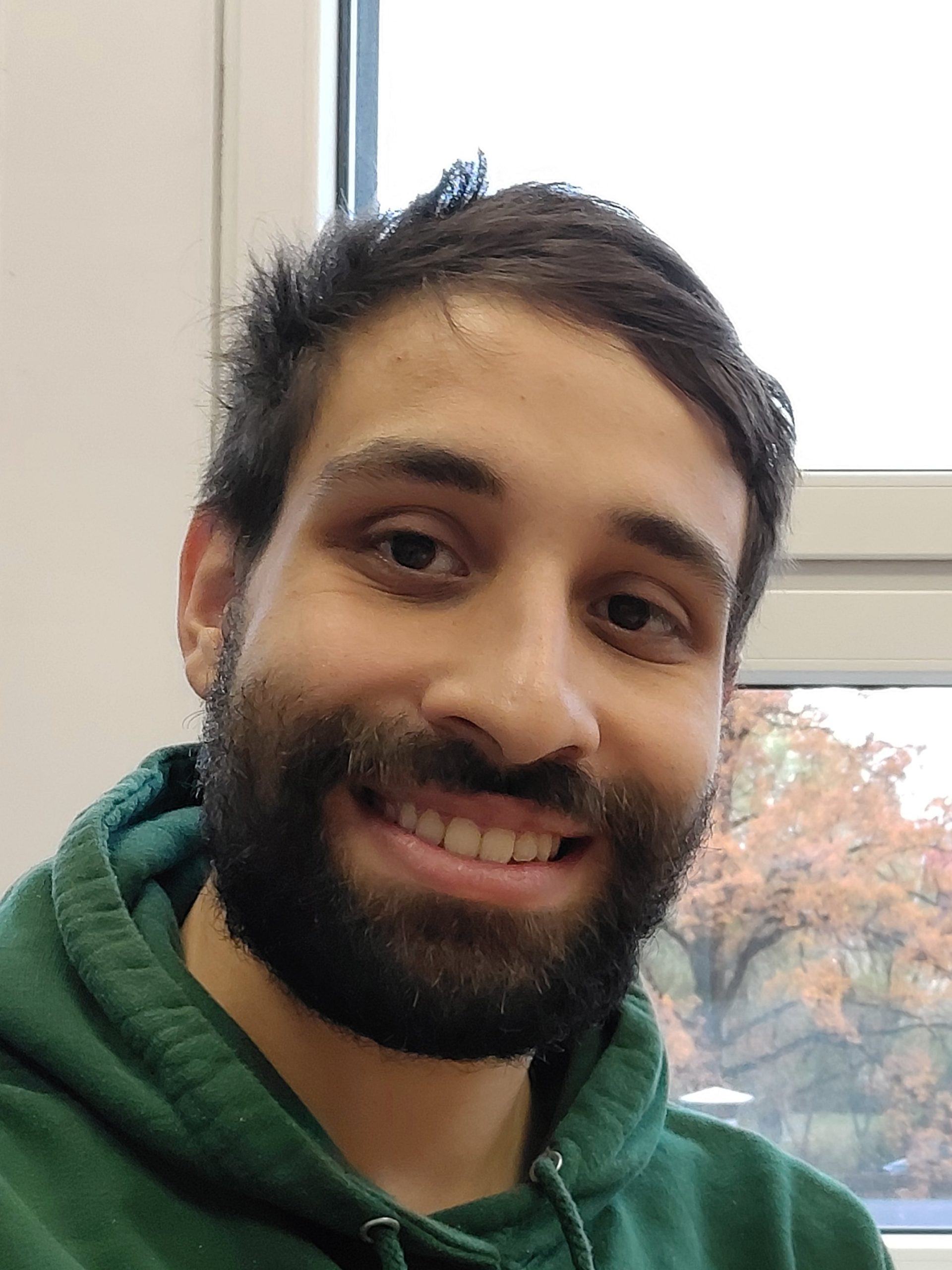
Ahmed Hanfy
M.Sc. – Applied Mathematics and Scientific Computing in Engineering Applications, InterMaths joint master’s program [University of L’Aquila, Italy 2019 (1st year) – Ivan Franko National University of Lviv, Ukraine 2020 (2nd year)]
B.Sc. – Mechanical Engineering with specialization in Fluid Mechanics, Alexandria University, Egypt. 2016
Ahmed Hady seeks to be deeply involved in the field of fluid mechanics with relevance to the global industry of aviation. He has significant research and technical expertise that varies between modeling, manufacturing, computational analysis, and software development.
Regarding his M.Sc. thesis, Ahmed conducted the work in the Institute of Fluid-Flow Machinery, Polish Academy of Sciences (IMP PAN). He has developed a desktop interface which is complementing experimental investigations with relevance to Shockwave Boundary layer interaction (SBLI). Furthermore, he has practiced in various CFD projects that cover supersonic, multi-phase flows, slide meshing, and heat transfer problems, mostly concerning propellers and airfoils.
Besides fluid mechanics, Ahmed has been involved in various robotics contests including ABU Robocon and MATE ROV as a co-founder and team lead. Together with his team they participated in the ROV international finals, including the 2016 version which was hosted by NASA NBL.
Contact: ahmed.hanfy@imp.gda.pl
 Objectives: To specify the conditions for the good reference case involving unsteady transitional SBLI on a rotor or fan blade. Throughout investigation of this case to obtain a reference data base. Work out the way of flow control implementation, realistic for a high-speed compressor cascade, based on unsteady suction and blowing or on the application of Vortex Generators. Assessment of the flow control devices effectiveness.
Objectives: To specify the conditions for the good reference case involving unsteady transitional SBLI on a rotor or fan blade. Throughout investigation of this case to obtain a reference data base. Work out the way of flow control implementation, realistic for a high-speed compressor cascade, based on unsteady suction and blowing or on the application of Vortex Generators. Assessment of the flow control devices effectiveness.
Expected Results: Design of a 2D aerofoil representative for tip section of a fan or front rotor of a High Pressure Compressor. CFD predictions for positioning of flow control devices and for exploration of the design space. Measurement of flow control effectiveness, creation of experimental data base for future comparison. Post-Test Comparison of experimental data and numerical results.
Planned secondment(s): NUMECA, IMPPAN, DLR
Supervisor: Prof. Marius Swoboda
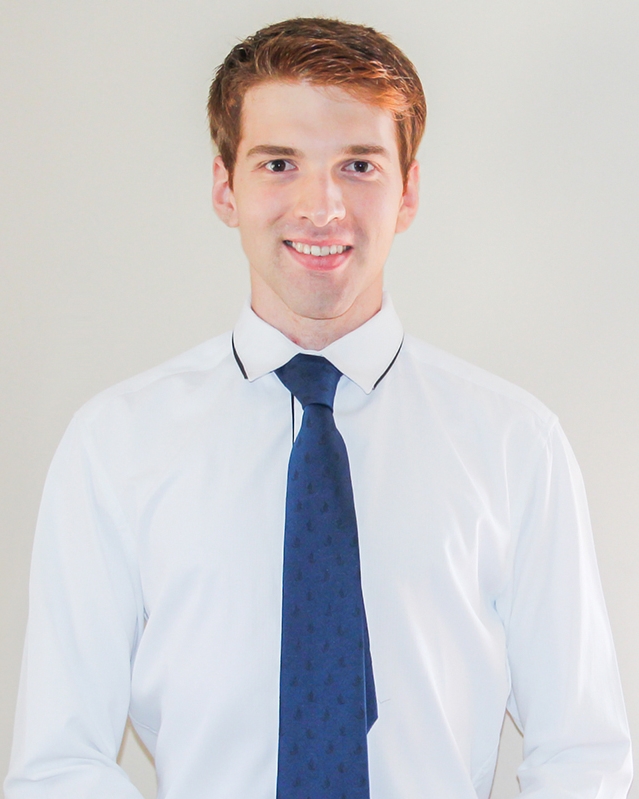
Philipp Nel
Philipp Nel obtained his Bachelor’s and Master’s degrees in Mechanical Engineering from South Africa’s Stellenbosch University, where he developed a special interest in high-speed aerodynamics and turbomachinery. He received the Aeronautical Society of South Africa’s award for “Best 4th year or honours degree project” for his honour’s dissertation, which concerned the numerical and experimental investigation of transonic wave drag and shock structures. Judges described the project as “An excellent rendition of a complex field of study, accompanied by an excellent presentation on supersonic flow imaging and gas dynamics”. He continued his studies in high-speed aerodynamics during his master’s project which concerned numerical modelling of a multi-stage transonic axial compressor, with emphasis on the effects of transition modelling, shock-induced boundary layer separation, and the effects of blade and end-wall roughness.
Some of Philipp’s other interests include economics, linguistics, art, and history.
 Objectives: Shock boundary layer interactions for a stator aerofoil with high loading and strong blade curvature (turning). To understand the loading limits at low Reynolds numbers when SBLI is present. Explore the parametric space of loading level and SBLI. Investigations of unsteady data downstream of the vane in order to understand forcing of the downstream blade row.
Objectives: Shock boundary layer interactions for a stator aerofoil with high loading and strong blade curvature (turning). To understand the loading limits at low Reynolds numbers when SBLI is present. Explore the parametric space of loading level and SBLI. Investigations of unsteady data downstream of the vane in order to understand forcing of the downstream blade row.
Expected Results: Design of a 2D aerofoil representative for tip section of a fan or front rotor of a High Pressure Compressor. CFD predictions for positioning of flow control devices and for exploration of the design space. Measurement of flow control effectiveness, creation of experimental data base for future comparison. Post-Test Comparison of experimental data and numerical results Design of a group of 2D aerofoils representative for high loading/turning and strong blade curvature. CFD prediction and definition of parameter space to be investigated experimentally. Completion of experimental test matrix. Post-Test comparison of experimental data and numerical results. Clarification of loading limits in respect to SBLI and strong adverse pressure gradient and low Re-number.
Planned secondment(s): TUB, NUMECA, IMPPAN
Supervisor: Prof. Marius Swoboda
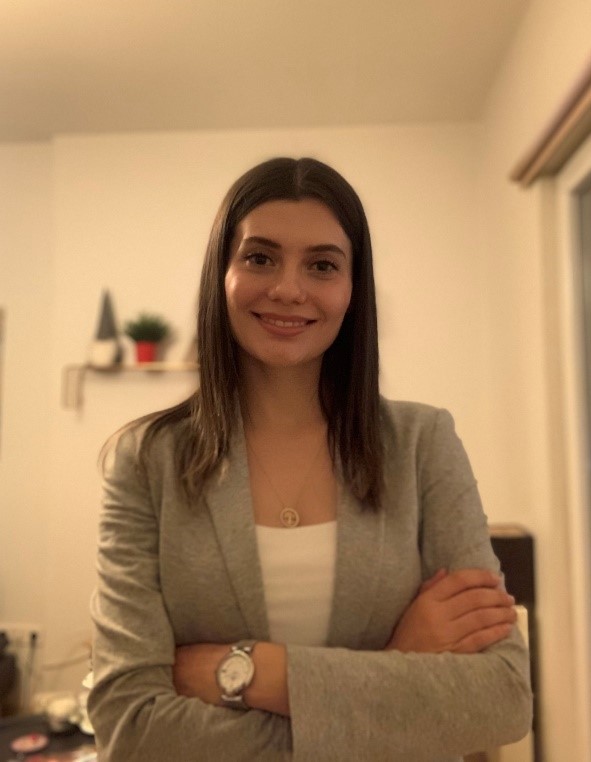
Selin Kahraman
Selin Kahraman holds a Bachelor of Engineering degree from Istanbul Technical University, Department of Aerospace Engineering. She was entitled to study double major program due to her academic standing and received her second Bachelor’s degree from Dept. of Mechanical Engineering where she has widen her perspective in engineering more. Along with her undergraduate studies and two dissertations, she focused on design of aircraft engines and turbomachinery aerodynamics. Also, she worked on PIV technique at the Combustion Laboratory newly-established in ITU to investigate the cold flow past a swirl vane for one of the thesis projects. She had two articles published related to this study. She has 8+ years of experience in different areas of aeronautical industry including aero-designer, leadership and lecturer roles as well. During her professional journey, she gained valuable experience especially in compressor aerodynamics, CFD, conceptual design and performance of aero-gas turbines which is her biggest aspiration since the years of university. During her latest experience, she worked for a turbojet engine development project on the design of a multistage transonic compressor and performance of the turbojet engine. Currently, she will perform her studies on compressor aerodynamics more deeply with the ESR-4 TeamAero project, as a PhD candidate.
 Objectives: The shock boundary layer interaction in the transonic axial compressor is a highly unsteady flow phenomenon. The resulting shock oscillation not only affects the integrity of the blade structure but is also responsible for high losses as well as limiting the possible working range. For a detailed description of the unsteady flow behaviour, numerical and experimental investigations are carried out on a transonic compressor cascade. This cascade will be designed in advance according to the state-of-the-art. (2) Development of a passive and active method to control the shock wave boundary layer interaction to reduce losses. The performance of the transonic compressor cascade will be improved by reduction of flow unsteadiness in the cascade. A novel 3D shape of the blade will be used as a passive flow influencing method. As an active flow control method, an optimized blowing and suction configuration will be applied. Development of the most effective configurations will be done by means of DLR’s modern automated “AutoOpti” optimization tool (3) Assessment of effectiveness of passive and active flow control methods for mitigation of SBLI effects in compressor cascade.
Objectives: The shock boundary layer interaction in the transonic axial compressor is a highly unsteady flow phenomenon. The resulting shock oscillation not only affects the integrity of the blade structure but is also responsible for high losses as well as limiting the possible working range. For a detailed description of the unsteady flow behaviour, numerical and experimental investigations are carried out on a transonic compressor cascade. This cascade will be designed in advance according to the state-of-the-art. (2) Development of a passive and active method to control the shock wave boundary layer interaction to reduce losses. The performance of the transonic compressor cascade will be improved by reduction of flow unsteadiness in the cascade. A novel 3D shape of the blade will be used as a passive flow influencing method. As an active flow control method, an optimized blowing and suction configuration will be applied. Development of the most effective configurations will be done by means of DLR’s modern automated “AutoOpti” optimization tool (3) Assessment of effectiveness of passive and active flow control methods for mitigation of SBLI effects in compressor cascade.
Expected Results: Considerable enhancement of the knowledge about the shock boundary layer interaction in transonic compressor cascades, especially with regard to the unsteady flow behaviour. Advanced design concept for the construction and application of novel passive and active flow control devices for influencing the shock wave boundary layer interaction on transonic compressor blades.
Planned secondment(s): UCAM, UGLA, IMPPAN
Supervisor: Dr. Alexander Hergt, Academic promotor: Prof. Julien Weiss
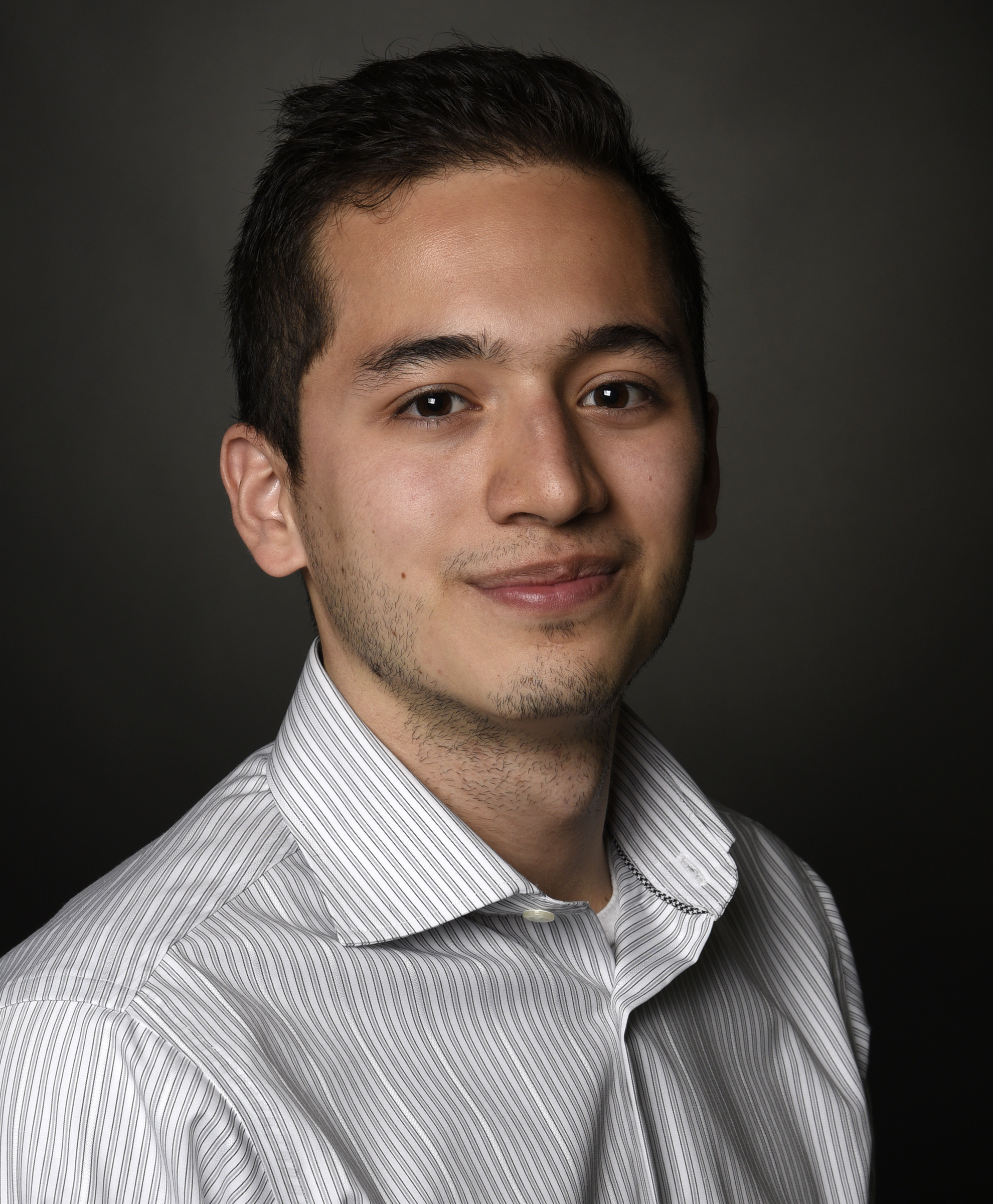
Edwin Joseph Munoz Lopez
Edwin is a dedicated and detail-oriented individual passionate about academics, sports, and music. He holds a Bachelor of Engineering degree from Canada’s Carleton University, where he specialized in Aerospace Engineering: Aerodynamics, Propulsion, and Vehicle Performance. He graduated from Carleton with high distinction and received the Senate Medal for outstanding academic achievement. Edwin also holds a Master of Science degree from France’s ISAE-SUPAERO, where he specialized in Advanced Aerodynamics and Propulsion. Edwin’s Master’s thesis at ISAE’s Department of Aerodynamics and Propulsion focused on the study of high-fidelity simulations for engine fan noise propagation. He graduated from ISAE being awarded the Exceptional Academic Achievement Award.
Edwin finds the fields of aerodynamics and aerospace propulsion fascinating. He continuously seeks for ways to improve his understanding in these fields by observing, practicing, and teaching. He is now looking forward to researching the Shock Wave Boundary Layer Interaction phenomenon at the DLR under the TEAMAero initiative and network.
Contact: Edwin.MunozLopez@dlr.de
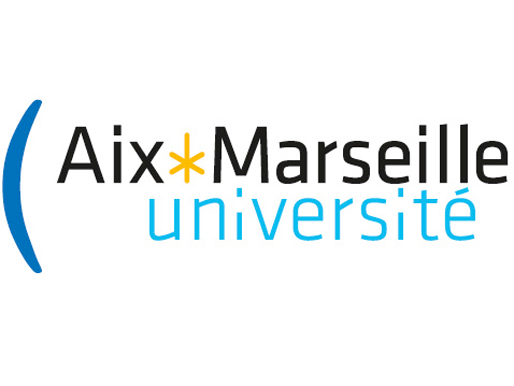 Objectives: Modern aviation is currently exploring the possibility of high altitude flight, where laminar conditions and low skin friction levels are targeted to operate vehicles efficiently and to reduce fuel consumption. In this framework, the interaction between a laminar boundary layer and a shock wave is of primary importance, since these interactions induce large separated flow regions and associated turbulence levels.
Objectives: Modern aviation is currently exploring the possibility of high altitude flight, where laminar conditions and low skin friction levels are targeted to operate vehicles efficiently and to reduce fuel consumption. In this framework, the interaction between a laminar boundary layer and a shock wave is of primary importance, since these interactions induce large separated flow regions and associated turbulence levels.
The current experimental project aims to shed further light on the sensitivity of laminar and turbulent shock/boundary layer interactions (SBLI) to upstream and downstream perturbations. In particular, the flow over a compression ramp will be investigated, and controlled disturbances will be applied in both the incoming boundary layer and selected downstream locations.The impact of surface perturbations on the separated flow will be documented using space-time resolved measurements in the supersonic wind-tunnel of the IUSTI Laboratory. Two types of disturbances will be considered:
- (1) Fluidic injection near the reattachment line of a turbulent SBLI: based on previous investigations at AMU during the European program UFAST, the mass balance within the separated flow directly impacts the well-known low-frequency unsteadiness. The future experiments will contribute to validate the model.
- (2) Upstream perturbations in a laminar SBLI: their influence on the shear flow transition will dramatically modify the topology of the interaction, as demonstrated in the previous results from the European TFAST project. Steady and unsteady perturbations generated by elements of small size in the upstream laminar boundary layer will be amplified until the separation line. This sensitivity study will contribute to the understanding of the dynamics of laminar interactions.
Expected Results: To obtain an innovative time-space resolved database of the considered interactions. This will extend the comparisons with numerical simulations realised with same initial conditions as the experiments (upstream perturbations, Reynolds number). An analysis of CFD and experimental results will allow to progress in the description of space-time development of the unsteadiness inside the mixing layer developed from the separation line and their influence (or not) on the low frequency breathing of the separated region. The response of the different type of interactions (laminar or turbulent) to localized perturbations will help to develop the new strategy to control the unsteady properties as well as the separation state of these flows.
Planned secondment(s): TU Delft, UCAM, ONERA
Supervisor: Dr. Pierre Dupont

Nikhil Mahalingesh
Nikhil Mahalingesh is 25 years old from Bangalore, India. He has a bachelor’s degree in mechanical engineering from PES Institute of Technology, India and a master of science degree in aerospace engineering (specialising in aerodynamics) from Delft University of Technology (TU Delft), Netherlands. His main skill set includes experimental aerodynamics, particularly in flow diagnostics and topological analysis through Particle Image Velocimetry (PIV). He is also well versed in programming languages of MATLAB and Python along with CFD softwares such as OpenFOAM and ANSYS Fluent. Hiking, biking, badminton, tennis, Formula 1, philosophy and history are some of his hobbies and interests.
Contact: nikhil.mahalingesh@univ-amu.fr
 Objectives: Modern aviation is currently exploring the possibility of high altitude flight, where laminar conditions and low skin friction levels are targeted to operate vehicles efficiently and to reduce fuel consumption. In this framework, the interaction between a laminar boundary layer and a shock wave is of primary importance, since these interactions induce large separated flow regions and associated turbulence levels. Highlighting and understanding the differences/similarities with the much more studied interactions for a turbulent boundary layer is therefore crucial.The main objective of the present project is to study of the influence of altered separation and/or reattachment upon the physics of a shock-boundary layer interaction (SBLI) by means of LES. It will be divided into two main tasks:
Objectives: Modern aviation is currently exploring the possibility of high altitude flight, where laminar conditions and low skin friction levels are targeted to operate vehicles efficiently and to reduce fuel consumption. In this framework, the interaction between a laminar boundary layer and a shock wave is of primary importance, since these interactions induce large separated flow regions and associated turbulence levels. Highlighting and understanding the differences/similarities with the much more studied interactions for a turbulent boundary layer is therefore crucial.The main objective of the present project is to study of the influence of altered separation and/or reattachment upon the physics of a shock-boundary layer interaction (SBLI) by means of LES. It will be divided into two main tasks:
- (1) Reference LES mimicking the flow configuration of the experiments associated to ESR6 will be carried out. It will include computations of ramp-induced separation for an incoming laminar boundary layer and of shock reflection promoting the separation of a fully turbulent boundary layer. Nominal, uncontrolled cases will first be computed for the two setups so as to define reference states. These states will then be altered by introducing either unsteady perturbations upstream of the laminar SBLI or steady mass addition through blowing in the vicinity of the reattachment for the turbulent SBLI.
- (2) Numerical experiments by means of LES swill be achieved to study supersonic turbulent boundary layer developing over a flat plate being deflected upward by a steady blowing then deflected downward by a steady suction. Suction/blowing conditions will be set to result in either a zero net mass flux or a net mass addition. It will require the definition of a robust and accurate boundary condition for steady suction and bleeding with an imposed net mass flux. For the zero net mass flux case, the suction/bleeding parameters will be adjusted to yield a “separated” region similar in size to the separation found in the uncontrolled turbulent flow studied in the first part. This reference LES set-up will be altered by reducing the mass flow rate of the downstream suction such as to achieve a similar net mass addition, as for the turbulent case controlled by downstream mass addition studied in the first part.
Expected Results: It is expected that the comparison between the computations of ramp-induced and blowing/suction-induced separations and the data gathered during the TFAST project for nominal shock reflection will help clarifying how generic the unsteadiness of the separated region are. The new computations will help gaining information on the influence of the mass addition upon the unsteadiness of the separated region. Results on flow unsteadiness obtained with the ideal suction/bleeding will help to analyse results obtained by real-life control devices.
Planned secondment(s): ONERA, UGLA, UNIROMA1
Supervisor: Dr. Lionel Larchevêque

Mariadebora Mauriello
Mariadebora Mauriello is a Ph.D. student at the Aix Marseille University. She held the Bachelor’s degree in Aerospace Engineering from the University of Pisa (Italy). In June 2020, she graduated in Aeronautical Engineering with a specialization track in Aerodynamics at Politecnico di Milano (Italy). She developed a computational thesis in the turbulence field. Inner-outer scale interactions in turbulent Couette flow ~ by carrying DNS simulations. The results obtained were so promising to allow her to edit the corresponding article in press. During the academic career, she participated in extracurricular courses, as “ Introduction to CFD for Engineers” held in Politecnico di Milano, and “Introduction into Finite Elements and Algorithms” held in Mines ParisTech and offered by TU Delft. Since November 2020, MM is part of the TEAMAero program – Horizon 2020 Marie Skłodowska-Curie European Training Network (ETN), and carries out her Ph.D. research “Numerical study (LES) of a separated Shock Boundary Layer Interaction with altered reattachment” at IUSTI laboratory, a public joint research unit under the administrative purview of CNRS and Aix Marseille University.
Contact: mariadebora.mauriello@univ-amu.fr
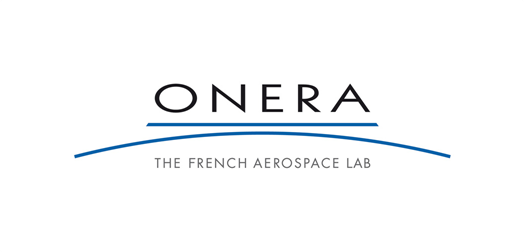 Objectives: Characterization (by experimental and CFD methods) of the interaction of a boundary layer with a strong shock on perforated plate. Control by perforated plates of the shock interaction with the boundary layer and its impact on the shock position and intensity will be investigated by means of measurement methods: (1) flow field visualisations, (2) steady and unsteady wall pressure measurements, (3) near-wall LDV and PIV measurements with special emphasis in the shock-induced separated region.LES and QDNS for the full wind tunnel will be carried out. The Reynolds number is moderate in the S8Ch wind tunnel (about 4000 based on the momentum thickness) and the wind tunnel span is of moderate extent: 120 mm. The synthetic eddy method will be used to impose realistic turbulent fluctuations in the inflow plane. The present method has to be modified to be able to take into account a lot of holes in the simulations. The effect of the discretization order of the schemes used for the derivation of the convective fluxes will be investigated. A large amount of data will allow for extensive comparison with experiment and analysis of the flow near the perforated plates.
Objectives: Characterization (by experimental and CFD methods) of the interaction of a boundary layer with a strong shock on perforated plate. Control by perforated plates of the shock interaction with the boundary layer and its impact on the shock position and intensity will be investigated by means of measurement methods: (1) flow field visualisations, (2) steady and unsteady wall pressure measurements, (3) near-wall LDV and PIV measurements with special emphasis in the shock-induced separated region.LES and QDNS for the full wind tunnel will be carried out. The Reynolds number is moderate in the S8Ch wind tunnel (about 4000 based on the momentum thickness) and the wind tunnel span is of moderate extent: 120 mm. The synthetic eddy method will be used to impose realistic turbulent fluctuations in the inflow plane. The present method has to be modified to be able to take into account a lot of holes in the simulations. The effect of the discretization order of the schemes used for the derivation of the convective fluxes will be investigated. A large amount of data will allow for extensive comparison with experiment and analysis of the flow near the perforated plates.
Expected Results: To provide a clear description of the flow topology for the different tested configurations, including an in-depth analysis of the flow in the vicinity of the perforated plates. In particular, the passive and/or active control devices maybe have not the same efficiency to strongly act on both the boundary layer separation and the shock mitigation. From CFD one expects: (1) support to the definition of the experiment: choices of the incoming boundary layer parameters and of the shock wave intensity, (2) contribution, complementary to the experiment, to the analysis of the flow topology. In particular, the simulation is expected to bring useful information near the perforated plates and inside the holes, (3) improvement of perforated plates flow modelling.
Planned secondment(s): AMU, TU Delft, UGLA
Supervisor: Dr. hab. Reynald Bur and Dr. Pierre Grenson
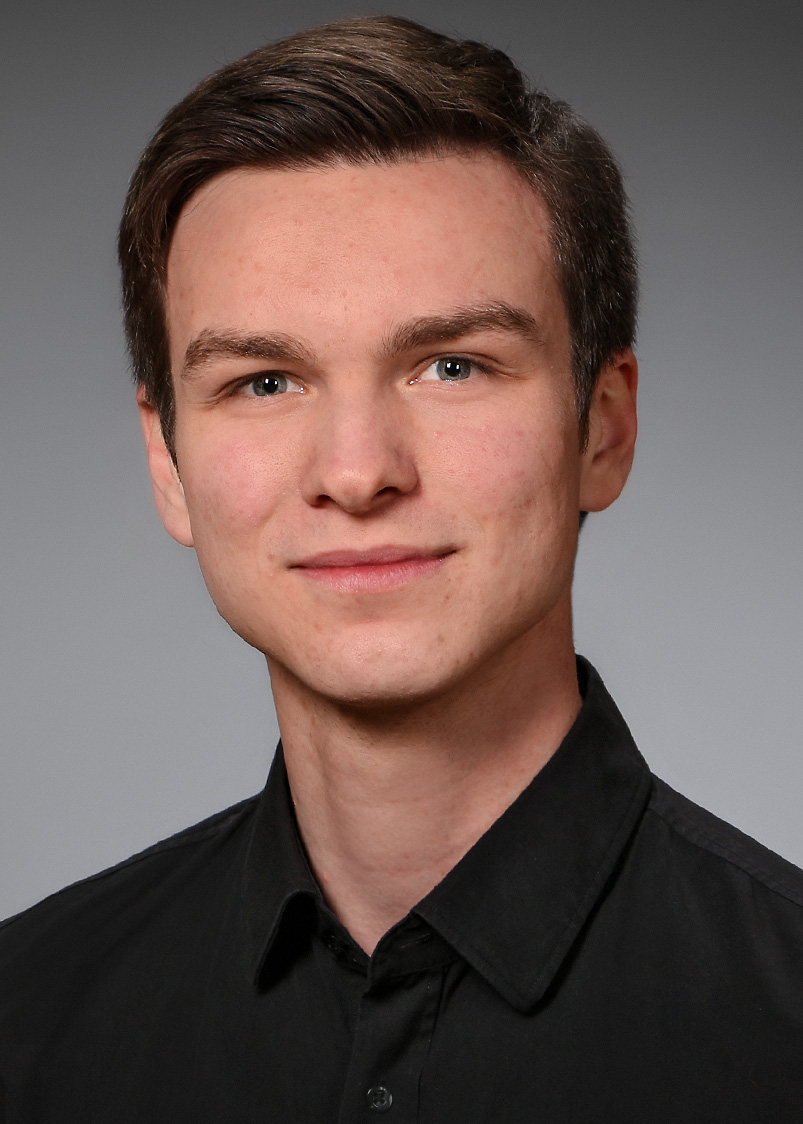
Julian Giehler
M.Sc. – Aeronautics and Astronautics with emphasis on fluid mechanics & turbomachinery, Technische Universität Berlin
B.Sc. – Transport Systems (Aeronautics and Astronautics), Technische Universität Berlin
As a freshly graduated engineer, Julian recently started his Ph.D. at the ONERA. Since he was a child, it has been his pleasure to observe the behavior of fluids in motion. During the studies at the TU Berlin, he focused more and more on fluid mechanics, particularly in experimental aerodynamics.
Besides his master’s, he worked as a student research and teaching assistant at the Chair of Aerodynamics. The study of previously unknown became his main interest. In his final thesis, he investigated a new kind of MEMS calorimetric shear-stress sensor. The numerical and experimental study aimed to optimize the sensor’s geometry with the help of surrogate modeling.
Julian enjoys road biking, equestrian sports, visiting museums and art galleries, or just learning new things in his free time.
Contact: julian.giehler@onera.fr
 Objectives: The Department of Engineering at the University of Cambridge is offering one position in the specific area of experimental high-speed aerodynamics, with the aim of investigating corner flow separation. Many practical flows, for example in wind tunnel working sections or inside engine inlets, feature streamwise corners formed by the intersection of two surfaces. When an adverse pressure gradient is imposed, for example by a shock wave, premature flow separation is often observed in these corner regions. There is now considerable evidence that this has not only a localised effect but may influence the nature of the interaction flow elsewhere. Due to a lack of suitable quality experimental data, numerical methods are struggling to correctly predict this flow. Following on from previous studies in Cambridge on the global corner effect in normal shock and impinging oblique shock interactions, this project addresses two fundamental issues in 3D SBLIs: Firstly, the effect of corner separations on flowfield unsteadiness will be determined, and secondly, the potential of flow control to mitigate the adverse corner effects will be explored.
Objectives: The Department of Engineering at the University of Cambridge is offering one position in the specific area of experimental high-speed aerodynamics, with the aim of investigating corner flow separation. Many practical flows, for example in wind tunnel working sections or inside engine inlets, feature streamwise corners formed by the intersection of two surfaces. When an adverse pressure gradient is imposed, for example by a shock wave, premature flow separation is often observed in these corner regions. There is now considerable evidence that this has not only a localised effect but may influence the nature of the interaction flow elsewhere. Due to a lack of suitable quality experimental data, numerical methods are struggling to correctly predict this flow. Following on from previous studies in Cambridge on the global corner effect in normal shock and impinging oblique shock interactions, this project addresses two fundamental issues in 3D SBLIs: Firstly, the effect of corner separations on flowfield unsteadiness will be determined, and secondly, the potential of flow control to mitigate the adverse corner effects will be explored.
1) To provide detailed information on the effect of corner separations on the unsteadiness of transonic/supersonic SBLIs.
2) To determine the potential of various flow control techniques to reduce corner separations and their associated flow unsteadiness.
Expected Results: A high-quality, detailed dataset of experimental measurements describing important unsteady features of shock interactions in transonic and supersonic corner flows. These will include on- and off-surface data, using the state-of-the-art flow diagnostics (such as LDV, PIV, high-speed schlieren, PSP). The data will allow a variety of flow control methods aimed at mitigating shock-induced flow separation in corners to be compared.
Planned secondment(s): AMU, TU Delft, TUB
Supervisor: Prof. Holger Babinsky

Timothy Missing
Timothy Missing is from South Africa, where he completed his Bachelor’s and Master’s in Engineering at the University of the Witwatersrand, Johannesburg. He had the privilege of working under the supervision of Prof. Beric Skews – an expert in compressible gas dynamics for over 60 years.
His undergrad work involved building a tilted shock tube to test reflections of moving shock waves on water. His Master’s focused on shock wave curvature caused by surface acceleration, for which he designed a rig to pitch a wedge at up to 32 rev/s in a supersonic wind tunnel. He also developed an unsteady Method of Characteristics code to simulate the accelerating-surface flow field. Timothy has experience with high speed Schlieren flow visualisation; shock tube and supersonic wind tunnel operation; Matlab and CFD software ANSYS Fluent.
Timothy is now undertaking his PhD in Engineering at the University of Cambridge, in the Fluids Research Group.
 Objectives: The primary objective of the investigation is to obtain information on the instantaneous three-dimensional structure of a shockwave-boundary layer interaction over rigid and flexible panel and the effect of flow control devices. The study considers a turbulent interaction with Mach number in the low supersonic range at high Reynolds number conditions and its control with vortex generator devices. The emphasis will be on the characterisation of the three-dimensional dynamics within the interaction. For this non-intrusive (optical) measurement techniques such as stereo/tomographic particle image velocimetry and particle tracking velocimetry will be used as main diagnostic technique. For obtaining temporal information (time scales) the use of hot-wire anemometry (secondment with IUSTI) and dual-tomo-PIV will be applied. In case of a flexible panel, high speed digital image correlation is foreseen to measure the structural response of the panel to the flow. Different vortex-generator geometries may be studied, such as microramps, zigzag strips, and jets. The experimental work will be validated/compared with CFD in collaboration with IUSTI (France) and University of Rome, La Sapienza (Italy).
Objectives: The primary objective of the investigation is to obtain information on the instantaneous three-dimensional structure of a shockwave-boundary layer interaction over rigid and flexible panel and the effect of flow control devices. The study considers a turbulent interaction with Mach number in the low supersonic range at high Reynolds number conditions and its control with vortex generator devices. The emphasis will be on the characterisation of the three-dimensional dynamics within the interaction. For this non-intrusive (optical) measurement techniques such as stereo/tomographic particle image velocimetry and particle tracking velocimetry will be used as main diagnostic technique. For obtaining temporal information (time scales) the use of hot-wire anemometry (secondment with IUSTI) and dual-tomo-PIV will be applied. In case of a flexible panel, high speed digital image correlation is foreseen to measure the structural response of the panel to the flow. Different vortex-generator geometries may be studied, such as microramps, zigzag strips, and jets. The experimental work will be validated/compared with CFD in collaboration with IUSTI (France) and University of Rome, La Sapienza (Italy).
Expected Results: The investigation is expected to deliver a unique volumetric data set representation, allowing the characterisation of the three-dimensional structure of the interaction. Comparison between interactions with and without control can provide evidence on the control mechanisms affecting the interaction, which is further quantified through a systematic study of different control conditions. Furthermore the effect of the panel flexibility on the interaction and its control will be quantified.
Planned secondment(s): AMU
Supervisor: Prof. Bas van Oudheusden and Dr. Ferdinand Schrijer

Jane Bulut
Jane Bulut is a doctoral candidate at the TU Delft within the structure of the Aerodynamics research group. She takes part as a Marie Skłodowska-Curie Early-Stage Researcher/PhD fellow in the TeamAero project while her work concerns the investigation and control of supersonic shock boundary layer interactions (SBLIs) and shock induced-fluid structure interactions.
After completing her bachelor studies at the Istanbul Technical University, where she chose experimental fluid dynamics as her main path of studies, she moved to Italy for her master studies at the University of Bologna. During her masters, she had a chance to work on computational fluid dynamics as a propulsion engineering intern in Spain and afterward, she wrote a thesis on design and flow-field analysis of a small satellite dedicated launcher.
Contact: J.Bulut@tudelft.nl
 Objectives: To develop and validate CFD methods for flows near the onset of separation. To develop flow control schemes using vortex/rods/jets/porous surfaces, to delay the separation onset. To apply the CFD methods to forward-swept wing suitable for a civil aircraft. To further our knowledge in turbulence simulation methods by comparing established DES techniques with implicit LES methods (iLES) and observable turbulence concepts
Objectives: To develop and validate CFD methods for flows near the onset of separation. To develop flow control schemes using vortex/rods/jets/porous surfaces, to delay the separation onset. To apply the CFD methods to forward-swept wing suitable for a civil aircraft. To further our knowledge in turbulence simulation methods by comparing established DES techniques with implicit LES methods (iLES) and observable turbulence concepts
Expected Results: Installation effects of flow control methods for alleviating the adverse effects of SBLI. The use of adjoint methods (new possibilities for coupling CFD with gradient-based optimisers) is proposed to give the sensitivity of flow to the location, number and shape of flow control devices and give better L/D for a wing across a range of flight conditions. ESR will build on the AIAA drag prediction workshop cases and will add simulated (via the embedded mesh method) flow control for SBLI. VGs and AJVGs will be considered at a first instance. The adjoint will attempt to re-distribute the flow control devices for optimal L/D over the flight envelope. A second step will consider the optimisation of each device in terms of size, angle to the flow, and properties. The final setup should maintain the optimal L/D. The flow solver to be used will be the HMB method of UGLA since it allows for the use of efficient frequency domain / harmonic balance methods for the analysis of unsteady flows. The combination of adjoint with harmonic balance is novel and has so far been demonstrated by UGLA for the analysis of helicopter blade flows, but it has never been applied to flow control and external wing flows. DES or iDDES will be exercised during the latter months of the project. Any experience gained from the aforementioned studies will be directly transferable to internal flows too, with UGLA already working on adjoint for flow control applied to shock-trains inside high-speed engine intakes.
Planned secondment(s): NUMECA, INPT
Supervisor: Prof. George Barakos
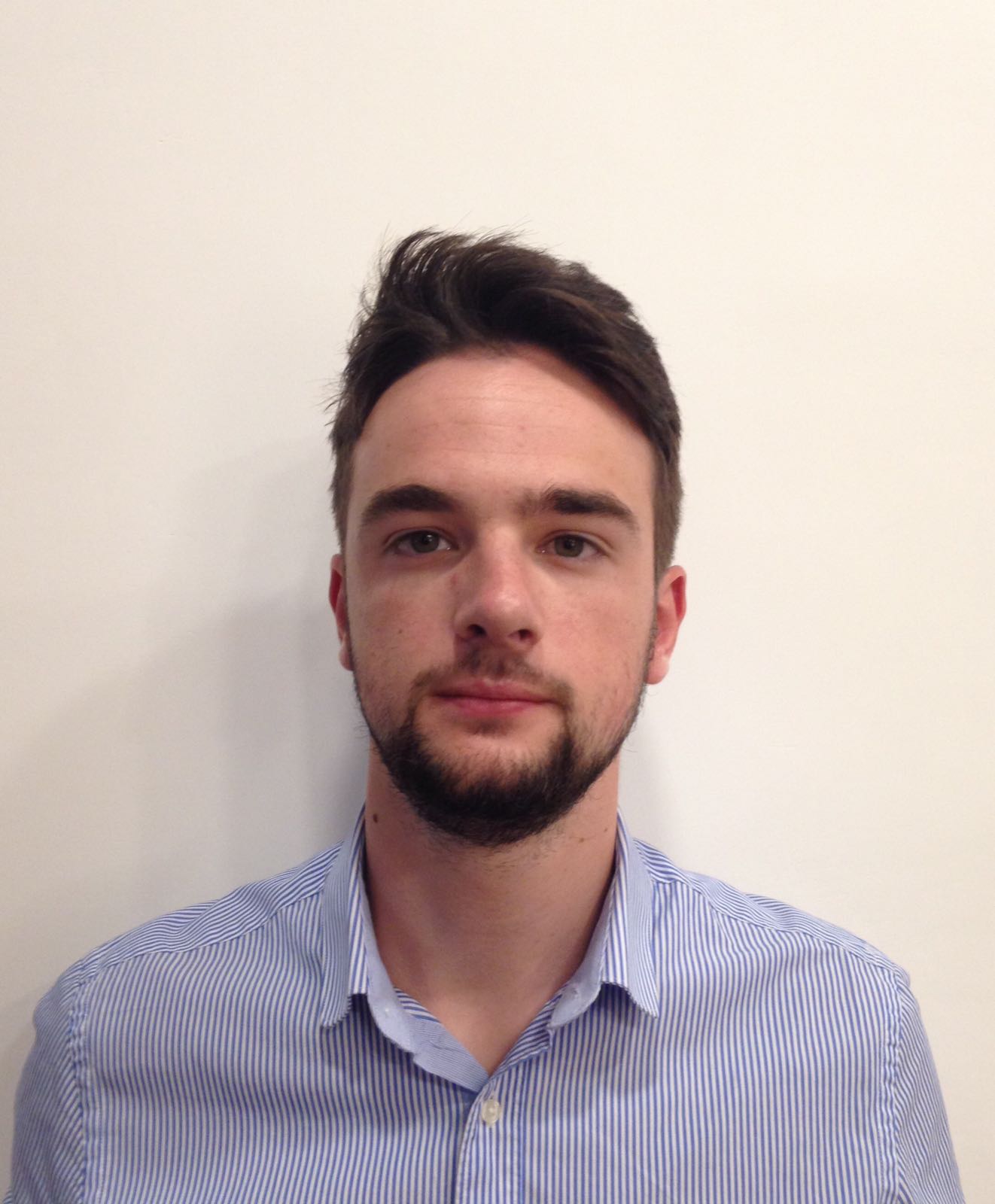
Andrea Petrocchi
Andrea Petrocchi was born in Terni, Italy, on September 11, 1995. Over the years he has shown a practical approach to problem solving together with a willingness to understand things.
He is a passionate student, interested in Aeronautics, Fluid Dynamics, Numbers, everything related to the Aerospace sector and everything that requires an effort to be overcome. Eager to learn something new and challenge himself every day, to take every opportunity to grow as an engineer and, above all, as a good person. Organised, precise, picky, competitive and thoughtful.
After graduating with honours at La Sapienza University of Rome he took up a doctoral position at the University of Glasgow, focusing on numerical simulations of Shock-Wave Boundary-Layer Interaction.
Contact: 2613543P@student.gla.ac.uk
 Objectives: The better understanding of SBLI requires an accurate and efficient flow solver that can capture all the details of the flow motion at an acceptable computing cost. Numeca has developed a high-order high-fidelity LES/DNS flow solver based on Flux Reconstruction method, particularly adapted to capture laminar to turbulent transition. The first objective of the ESR will be to extent this solver to transonic regime. One of the challenges of this approach is to be able to accurately capture the shock pattern and the SWBLI at a rather coarse number of degrees of freedom. The high-order solver will allow to perform long-term unsteady computations at a reduced computing cost. LES for WP1 configuration will be performed. Furthermore, over the last decades, Numeca has developed a Non-Linear Harmonic (NLH) method in order to accurately and efficiently compute unsteady rotor/stator interactions for turbomachinery applications. The second objective is to develop an accurate reduce-order model for unsteady SBLI leading to fluctuating detached flow. This reduce order model will be based on the NLH method that will be adapted in order to take into account the fluctuations of turbulent variables in the presence of a shock-induced unsteady detached flow. Main turbulent source terms for time-mean and harmonic equations will be identified thanks to former LES simulations. Those source terms will be added to the already existing NLH model. It is expected to obtain both a high-order high-fidelity and a more efficient reduce-order model of SBLI. The latter will be directly applicable to turbomachinery industrial configurations and that will take into account perturbations coming from unsteady rotor/stator interaction.
Objectives: The better understanding of SBLI requires an accurate and efficient flow solver that can capture all the details of the flow motion at an acceptable computing cost. Numeca has developed a high-order high-fidelity LES/DNS flow solver based on Flux Reconstruction method, particularly adapted to capture laminar to turbulent transition. The first objective of the ESR will be to extent this solver to transonic regime. One of the challenges of this approach is to be able to accurately capture the shock pattern and the SWBLI at a rather coarse number of degrees of freedom. The high-order solver will allow to perform long-term unsteady computations at a reduced computing cost. LES for WP1 configuration will be performed. Furthermore, over the last decades, Numeca has developed a Non-Linear Harmonic (NLH) method in order to accurately and efficiently compute unsteady rotor/stator interactions for turbomachinery applications. The second objective is to develop an accurate reduce-order model for unsteady SBLI leading to fluctuating detached flow. This reduce order model will be based on the NLH method that will be adapted in order to take into account the fluctuations of turbulent variables in the presence of a shock-induced unsteady detached flow. Main turbulent source terms for time-mean and harmonic equations will be identified thanks to former LES simulations. Those source terms will be added to the already existing NLH model. It is expected to obtain both a high-order high-fidelity and a more efficient reduce-order model of SBLI. The latter will be directly applicable to turbomachinery industrial configurations and that will take into account perturbations coming from unsteady rotor/stator interaction.
Planned secondment(s): UNIROMA1, AMU, IMPPAN
Supervisor: Prof. Charles Hirsch and Dr. Benoit Tartinville

Nicolas Goffart
Nicolas Goffart is a Belgian engineer recently graduated from two institutions. He first studied at UMONS in Belgium where he majored in energy engineering.
Interested in fluid dynamics and aeronautics, he then followed a
specialisation in aerodynamics at ISAE-SUPAERO (Toulouse, France) as
part of a T.I.M.E double degree program.
These experiences motivate him to contribute to the future of aeronautics and decided him to participate in the TEAMAero project.
Nicolas is now working at Cadence Design Systems on the high-fidelity simulation and the modelling of unsteady shock wave boundary layer interactions.
Besides his education, Nicolas is a music enthusiast and plays badminton. He also used to play chess in youth competitions.
 Objectives: To develop and validate advanced numerical methods for the prediction of wall-bounded turbulent flows in the presence of wall roughness, and/or control devices like vortex generators (VG). This target is particularly ambitious in the traditional numerical methods for compressible flows in complex geometries, in one form or another, incorporate numerical diffusion for stabilization purposes. Furthermore, meshing the individual roughness elements and vortex generators may be a tedious and time-consuming exercise. For that purpose, in the proposed research we will focus on numerical methods capable of guaranteeing nonlinear stabilization without any form of artificial diffusion, and to handle arbitrarily complex geometries without the need to generate body-fitted meshes. In this respect, it is foreseen to use a baseline energy-consistent Cartesian solver developed by URLMS, within the context of an Immersed-Boundary (IB) treatment of complex geometries embedded in the flow field. The tool will be used to study boundary layer transition inception caused by roughness and Vgs, also in order that unfavourable effects associated with SBLI (oblique or normal shock) are minimized. Numerical experiments will be carried out for basic configurations as flat plates with impinging shock, as well as for transonic flow over realistic airfoils.
Objectives: To develop and validate advanced numerical methods for the prediction of wall-bounded turbulent flows in the presence of wall roughness, and/or control devices like vortex generators (VG). This target is particularly ambitious in the traditional numerical methods for compressible flows in complex geometries, in one form or another, incorporate numerical diffusion for stabilization purposes. Furthermore, meshing the individual roughness elements and vortex generators may be a tedious and time-consuming exercise. For that purpose, in the proposed research we will focus on numerical methods capable of guaranteeing nonlinear stabilization without any form of artificial diffusion, and to handle arbitrarily complex geometries without the need to generate body-fitted meshes. In this respect, it is foreseen to use a baseline energy-consistent Cartesian solver developed by URLMS, within the context of an Immersed-Boundary (IB) treatment of complex geometries embedded in the flow field. The tool will be used to study boundary layer transition inception caused by roughness and Vgs, also in order that unfavourable effects associated with SBLI (oblique or normal shock) are minimized. Numerical experiments will be carried out for basic configurations as flat plates with impinging shock, as well as for transonic flow over realistic airfoils.
Expected Results: To research is expected to: (1) yield innovative prediction tools for complex transitional/turbulent flows; (2) improve understanding of the physical behaviour of SBLI in the transitional regime. Regarding the first item, the solver under study will yield improved prediction capabilities over existing software especially in that it will support LES models without ambiguities related to spurious, numerics dictated, energy drain. Further, by entirely avoiding the meshing process, it will allow for simple testing of the effectiveness of different types of VGs and accurate design of the optimal distribution of control devices located upstream of flow zones featuring unsteady SBLI. The tool may lead to the design of more efficient control strategies made to minimize unsteady effects and/or drag for aerodynamic surfaces operating in the transonic/supersonic regime.
Planned secondment(s): CIRA, AMU, UCAM, ONERA
Supervisor: Prof. Sergio Pirozzoli

Alessandro Ceci
M.Sc. – Double Degree Program – Aeronautical Engineering (Aerodynamic Track) – Politecnico di Milano, Italy & KTH Royal Institute of Technology, Sweden – 2017
B.Sc. – Aerospace Engineering – Politecnico di Milano, Italy – 2014
Alessandro is a fluid mechanics engineer with two great passions: motor-sport and fundamental fluid mechanics research.
In his M.Sc. Thesis, Alessandro analyzed the generation of indirect combustion noise in Nozzle Guide Vanes (NGV) by the means of LES simulations. The novelty of the research and the quality of the results let him publish two papers in fluid mechanics journals.
After the M.Sc. Alessandro decided to follow one of his big passions, being able to get an Aerodynamicist role in two Formula1 teams, where he worked for more than 3 years. Finally, Alessandro decided that it was time to cultivate is passion for fundamental research. Since January 2021 he is a PhD Student at Università di Roma la Sapienza where he will develop numerical tools for the study of Shock Boundary Layers Interactions (SBLI).Besides his professional path, Alessandro is very fond of sports (with particular interest in tennis, padel-tennis and skiing) and traveling.
 Objectives: To provide a numerical study of transition influence and control, by using appropriate flow control devices in order to minimise the skin-friction coefficient upstream of and within the SBLI region. A special focus will be attributed to virtualization and modelling of the control devices as for example piezo-actuators function, blowing/suction and AJVG within the CFD methodology. Optimization of the actuators distributed action in respect of travelling waves creation will be investigated and their feedback effects towards the upstream of the Shock-wave-Boundary Layer-Interaction (SBLI) region will be studied. . This study will investigate the influence of these actuators on the transition dynamics upstream of the SBLI for a M=1.6 oblique shock flow case (WP1), as well as for the normal shock around a supercritical wing flow case (WP3), by using morphing through adapted actuators operation in multiple frequencies, amplitudes and phase. Numerical simulations will be carried out for the supersonic and transonic interaction. LES of a laminar M=1.6 shock reflection, computed for the TFAST project, will be compared with several new DDES of closely related flow cases. The CFD approaches will be based on the Organised Eddy Simulation (OES) approach near the wall, in order to capture non-equilibrium turbulence effects arising in the SBLI, as well as on the Delayed Detached Eddy simulation (OES), wiith particular emphasis on the embedded DDES-OES. An efficient modelling by re-injection of turbulence in the shear-layer interfaces, subjected to the development of Kelvin-Helmholtz vortices within the SBLI will be employed by inhomogeneous stochastic forcing of the turbulent kinetic energy and dissipation rate transport equations.
Objectives: To provide a numerical study of transition influence and control, by using appropriate flow control devices in order to minimise the skin-friction coefficient upstream of and within the SBLI region. A special focus will be attributed to virtualization and modelling of the control devices as for example piezo-actuators function, blowing/suction and AJVG within the CFD methodology. Optimization of the actuators distributed action in respect of travelling waves creation will be investigated and their feedback effects towards the upstream of the Shock-wave-Boundary Layer-Interaction (SBLI) region will be studied. . This study will investigate the influence of these actuators on the transition dynamics upstream of the SBLI for a M=1.6 oblique shock flow case (WP1), as well as for the normal shock around a supercritical wing flow case (WP3), by using morphing through adapted actuators operation in multiple frequencies, amplitudes and phase. Numerical simulations will be carried out for the supersonic and transonic interaction. LES of a laminar M=1.6 shock reflection, computed for the TFAST project, will be compared with several new DDES of closely related flow cases. The CFD approaches will be based on the Organised Eddy Simulation (OES) approach near the wall, in order to capture non-equilibrium turbulence effects arising in the SBLI, as well as on the Delayed Detached Eddy simulation (OES), wiith particular emphasis on the embedded DDES-OES. An efficient modelling by re-injection of turbulence in the shear-layer interfaces, subjected to the development of Kelvin-Helmholtz vortices within the SBLI will be employed by inhomogeneous stochastic forcing of the turbulent kinetic energy and dissipation rate transport equations.
Expected Results: This study will allow for sensitivity study in respect of transition influence and optimized control strategies , by using the High-Fidelity CFD methods, as well as efficient Reduced order Modelling approaches for compressible flows. Control of the upstream of SBLI boundary layer region will be carried out for both, basic flows and application (wing), thanks to optimal AJVG and adapted actuators operation, able to follow and manipulate the shock unsteadiness.
Planned secondment(s): UGLA, AMU, UNIROMA1
Supervisor: Dr. Marianna Braza and Dr. Gilles Harran

César Jiménez Navarro
César is a self-motivated professional with enthusiasm to learn new things and always trying to do his best in any assigned work to be appreciated for his performance. He has a B.Sc. in Aerospace Engineering from “Universitat Politècnica de València” (Spain) and a M.Sc in Aeronautical Engineering from “Linköpings Universitet” (Sweden). The main areas of especialization are aerodynamics, CFD and aircraft design. During his academic life he undertook two ERASMUS+ exchanges at: Queen’s University Belfast (United Kingdom) and Cranfield University (United Kingdom). He also worked as teacher assistant in aerodynamics and research assistant for studying the effects of leading edge bluntness in hypersonic vehicles using CFD techniques.
After his M.Sc studies he was selected in the TEAMAero program where he undertakes the PhD: “Numerical investigation of transition and buffet control with flow control devices and morphing wings” at “Institut National Polytechnique de Toulouse” (France). He is also very interested in culinary arts, nature, sports and traveling.
 Objectives: To provide detailed steady and unsteady experimental data in transitional SBLIs representative of those occurring in compressor blades, for the specific goal of CFD code validation.
Objectives: To provide detailed steady and unsteady experimental data in transitional SBLIs representative of those occurring in compressor blades, for the specific goal of CFD code validation.
Methodology: Detailed steady and unsteady experimental data will be gathered in the vicinity of the shock system occurring on a simplified compressor blade model in a supersonic wind tunnel with and without flow control devices. Available experimental methods include both classical and state-of-the-art steady and unsteady pressure and velocity measurement systems, e.g., piezoresistive pressure sensors, piezo-foils, hot-film/hot-wire arrays, high-speed schlieren, and standard/high-speed PIV.
Expected Results: Detailed steady and unsteady experimental data in the vicinity of the shock for CFD code validation for both uncontrolled and controlled transitional SBLIs representative of those occurring in compressor blades. Analysis of the associated flow physics. Publication of results in scientific conferences and journals.
Planned secondment(s): DLR, RRD, IMPPAN
Supervisor: Prof. Julien Weiss

Cosimo Corsi
From Florence, Italy, Cosimo is a young graduate who studied at Politecnico di Torino. He obtained both his B.Sc. and M.Sc. in Aerospace Engineering, with a specialization in Aerogasdynamic, carrying out experimental thesis projects. During his academic years he was at the lead of the aerodynamic department of the university team where he contributed to the design, construction and testing of UAVs. After his studies he won a 6-month research fellowship at GE-Aviation in Turin, Italy, before joining the TEAMAero’s ESR15 project at TU Berlin to work on experimental investigations on transitional Shock-BL-Interaction with flow control devices. During his free time Cosimo enjoys travelling and riding his mountain bike surrounded by nature, he is a guitar player since the age of 11 in love with classical, rock and jazz music.
Contact: cosimo.corsi@tu-berlin.de